What'sNEW Jul - Sep 2023
 "Spacecraft Returns With an Asteroid Gift," by Katarina Miller, The New York Times, 26 Sep 2023. "Spacecraft Returns With an Asteroid Gift," by Katarina Miller, The New York Times, 26 Sep 2023.
 "...haul of asteroid dust and rock returns to Earth," by Alexandra Witze, Nature, 24 Sep 2023. "...haul of asteroid dust and rock returns to Earth," by Alexandra Witze, Nature, 24 Sep 2023.
 "NASA spacecraft delivering biggest sample yet from an asteroid," by Marcia Dunn, Phys.Org, 20 Sep 2023. "NASA spacecraft delivering biggest sample yet from an asteroid," by Marcia Dunn, Phys.Org, 20 Sep 2023.
 Comet Rendezvous has related history and updates. Comet Rendezvous has related history and updates.
 Like a Greek god, John von Neuman had superhuman powers – and weaknesses – as we learn in The MANIAC by Benjamin Labatut. "Johnny" was the Hungarian genius who pionered programmable computers, helped to design the atomic bomb, invented game theory and more. His story is told in the fictionalized reminiscences of colleagues, family, and others who knew him. They, too, have weaknesses which are apparent in the human voices Labatut gives them. Everyone is seen vividly, without makeup. The basic facts are accurate, but the essays are imagined. It rings true, like the best historical fiction.
Like a Greek god, John von Neuman had superhuman powers – and weaknesses – as we learn in The MANIAC by Benjamin Labatut. "Johnny" was the Hungarian genius who pionered programmable computers, helped to design the atomic bomb, invented game theory and more. His story is told in the fictionalized reminiscences of colleagues, family, and others who knew him. They, too, have weaknesses which are apparent in the human voices Labatut gives them. Everyone is seen vividly, without makeup. The basic facts are accurate, but the essays are imagined. It rings true, like the best historical fiction.
I love to see deep into the history of science, with its human drama unhidden, as when Paul Ehrenfest witnesses the early development of quantum theory. Eugene Wigner says that von Neuman was the first to understand what Kurt Gödel had proven, and it affected him profoundly. Richard Feynman admits that thoughtless youthful striving and competitiveness at Los Alamos largely propelled us to Hiroshima and Nagasaki.
In Sydney Brenner's telling, von Neuman foresaw the logic of DNA replication and translation even before the discovery of DNA. In another remembrance from Wigner, von Neuman thought that a computer-based version of life might reach "a threshold, a tipping point that, if surpassed, would kick off an evolutionary process in the machines, leading to... offspring of ever-increasing complexity." When von Neuman died, in 1957, computers were extremely primitive by today's stardards, but today the fantasy remains alive – and unattained. In an included sequel, computers wth Artificial Intelligence defeat all humans in games of skill. That would please von Neuman.
 The MANIAC by Benjamin Labatut,
Random House, coming 03 Oct 2023. The MANIAC by Benjamin Labatut,
Random House, coming 03 Oct 2023.
 Thanks, Mark Frederick at the Memphis bookstore, Novel. Thanks, Mark Frederick at the Memphis bookstore, Novel.
 Computer Models of Evolution is the first of several related pages. Computer Models of Evolution is the first of several related pages.
 The Evolution Prize was intended to test the referenced fantasy. The Evolution Prize was intended to test the referenced fantasy.
A planet 8.6 times as massive as Earth has an atmosphere containing CO2, CH4 and dimethyl sulfide, which are symptomatic of life. It orbits in the habitable zone of a cool star, and likely has a water ocean. Its mass helps it keep its atmosphere, and its star will shine peacefully for much longer than our sun. Only 120 light-years away, it looks like a good candidate for hosting longlasting life.
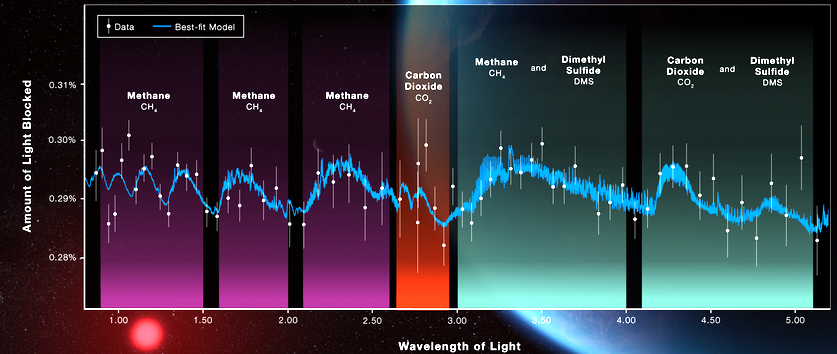
 "Webb Discovers Methane, Carbon Dioxide in Atmosphere of K2-18b," NASA/SCTI and Newswise, 11 Sep 2023; re: "Webb Discovers Methane, Carbon Dioxide in Atmosphere of K2-18b," NASA/SCTI and Newswise, 11 Sep 2023; re:
 "Carbon-bearing Molecules in a Possible Hycean Atmosphere," by Nikku Madhusudhan et al., arXiv:2309.05566, submitted 11 Sep 2023. "Carbon-bearing Molecules in a Possible Hycean Atmosphere," by Nikku Madhusudhan et al., arXiv:2309.05566, submitted 11 Sep 2023.
 The Life of Super-Earths, by Dimitar Sasselov, tells why they may be better suited than Earth for advanced life. The Life of Super-Earths, by Dimitar Sasselov, tells why they may be better suited than Earth for advanced life.
 Life on Europa, Other Moons, Other Planets?..., has links about other candidates. Life on Europa, Other Moons, Other Planets?..., has links about other candidates.
 Dimethyl sulfide is the subject of Jacob Navia's comments, 17 Sep 2023. Dimethyl sulfide is the subject of Jacob Navia's comments, 17 Sep 2023.
A universal big bang would sterilize any life, but other scenarios are viable. Now, new data from JWST are prompting serious questions about the whole standard model in cosmology.
 "The MillenniumTNG project: the galaxy population at z ≥ 8," by Rahul Kannan et al., M.N.R.A.S., Sep 2023.
The early release science results from JWST have yielded an unexpected abundance of high-redshift luminous galaxies.... This indicates either an incomplete understanding of the new JWST data or a need for more sophisticated galaxy formation models..., or even deviations from the standard ΛCDM model. "The MillenniumTNG project: the galaxy population at z ≥ 8," by Rahul Kannan et al., M.N.R.A.S., Sep 2023.
The early release science results from JWST have yielded an unexpected abundance of high-redshift luminous galaxies.... This indicates either an incomplete understanding of the new JWST data or a need for more sophisticated galaxy formation models..., or even deviations from the standard ΛCDM model.
 "The Story of Our Universe May Be Starting to Unravel," by Adam Frank and Marcelo Gleiser, The New York Times, 02 Sep 2023.
We may be at a point where we need a radical departure from the standard model.... "The Story of Our Universe May Be Starting to Unravel," by Adam Frank and Marcelo Gleiser, The New York Times, 02 Sep 2023.
We may be at a point where we need a radical departure from the standard model....
 The End and the Big Bang has lots of recent updates. The End and the Big Bang has lots of recent updates.
Researchers estimate that there are a quadrillion interstellar objects in the cubic parsec of space surrounding the Sun.... In addition, Particles of interstellar dust fly through the Solar System all the time.... These comments come in an article disputing a recent claim that interstellar particles have been found on the sea floor.
 An 'alien meteorite' probably didn't slam into Earth...? by Alexandra Witze, Nature, 06 Sep 2023; also: An 'alien meteorite' probably didn't slam into Earth...? by Alexandra Witze, Nature, 06 Sep 2023; also:
 "Did interstellar debris fall to the sea floor?..." by Daniel Clery and Paul Voosen, Science, 08 Sep 2023; re: "Did interstellar debris fall to the sea floor?..." by Daniel Clery and Paul Voosen, Science, 08 Sep 2023; re:
 ...Spherules of Likely Extrasolar Composition in the Pacific Ocean..., by Abraham Loeb et al., arXiv, 29 Aug 2023. ...Spherules of Likely Extrasolar Composition in the Pacific Ocean..., by Abraham Loeb et al., arXiv, 29 Aug 2023.
We notice a shift in our earthly perspective: in a few decades the presence in nearby space of abundant interstellar material including comets has quietly become well accepted. Seldom mentioned is something even more interesting: the interstellar dust that Stardust encountered appeared to contain very large organic molecules.
 27 Apr 2000: Most interstellar particles captured by Stardust are complex organic compounds. 27 Apr 2000: Most interstellar particles captured by Stardust are complex organic compounds.
 First Direct Chemical Analysis of Interstellar Dust by Franz R. Krueger and Jochen Kissel, 29 May 2000. First Direct Chemical Analysis of Interstellar Dust by Franz R. Krueger and Jochen Kissel, 29 May 2000.
| 30 Aug 2023 |
What'sNEW about HGT


|
Microbial evolution is driven by rapid changes in gene content mediated by horizontal gene transfer (HGT).
 Identifying and tracking mobile elements in evolving compost communities yields insights into the nanobiome, by B. van Dijk, P. Buffard, A.D. Farret al., doi:10.1038/s43705-023-00294-, ISME Commun., 17 Feb 2023. Identifying and tracking mobile elements in evolving compost communities yields insights into the nanobiome, by B. van Dijk, P. Buffard, A.D. Farret al., doi:10.1038/s43705-023-00294-, ISME Commun., 17 Feb 2023.
 Our news hub for HGT among bacteria, posted with keynote story 10 Mar 2021. Our news hub for HGT among bacteria, posted with keynote story 10 Mar 2021.
 Viruses... points to many examples of HGT across all kingdoms. Viruses... points to many examples of HGT across all kingdoms.
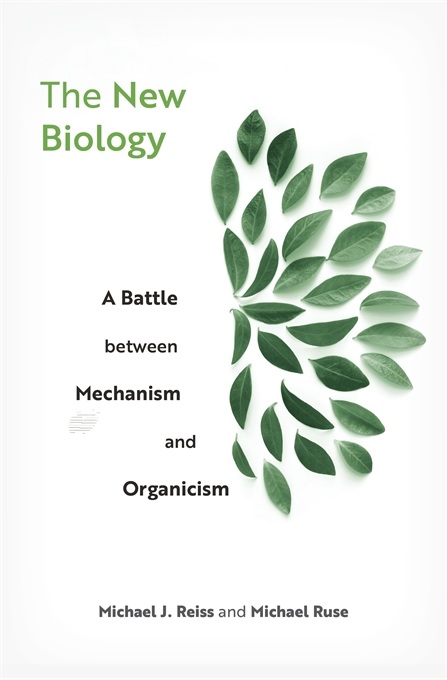 The New Biology promises to enlighten us about the relative merits of two opposing approaches to evolution, namely mechanism and organicism. Or reductionism and holism. Or materialism and systems biology, or determinism and indeterminism. Whatever. You soon pick up that the authors lean toward the latter side, but with reservations.
The New Biology promises to enlighten us about the relative merits of two opposing approaches to evolution, namely mechanism and organicism. Or reductionism and holism. Or materialism and systems biology, or determinism and indeterminism. Whatever. You soon pick up that the authors lean toward the latter side, but with reservations.
The story begins with an informative historical review of the science of evolution, including close scrutiny wth the new polarizing filter. "Materialism without reductionism...," for example. Then Reiss and Ruse move to issues of health, sex and gender, race, even Gaia, and guess what. They, also, are torn between the two conflicting points of view. The suggested solution comes in Chapter 9, "God and the New Biology."
I notice that the conflict vanishes in less political sciences. Weather forecasting readily incorporates global phenomena such as el niño without needing a new philosophy. For the theory of evolution, yes, there is a crisis as serious as any in the history of science. But the problems are compounded by faulty assumptions and misguided questions. If we get those right, the theory of evolution can bypass the gridlock, and God can stay serenely above the fray.
 The New Biology: A Battle between Mechanism and Organicism, by Michael J. Reiss and Michael Ruse, ISBN:9780674972247, Harvard University Press, 20 Jun 2023. The New Biology: A Battle between Mechanism and Organicism, by Michael J. Reiss and Michael Ruse, ISBN:9780674972247, Harvard University Press, 20 Jun 2023.
 Evolution vs Creationism has related history, comments and links. Evolution vs Creationism has related history, comments and links.
 Some Things Are Simply Given: a related essay (local pdf, close to return.) Some Things Are Simply Given: a related essay (local pdf, close to return.)
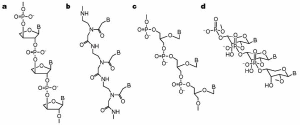 Twenty-one years ago, Gerald Joyce, a leading expert on origin-of-life theories, discussed the state of that research field. There were lots of problems. To deal with the chemical clutter that would muck up the prebitic world, Joyce proposed various "XNA Worlds" (right), as possible predecessors to the RNA World. None has proven fruitful. The software issue remains untouched. Today, two decades after Joyce's review, the origin-of-life problem is as daunting as ever. Is it time for a radical alternative?
Twenty-one years ago, Gerald Joyce, a leading expert on origin-of-life theories, discussed the state of that research field. There were lots of problems. To deal with the chemical clutter that would muck up the prebitic world, Joyce proposed various "XNA Worlds" (right), as possible predecessors to the RNA World. None has proven fruitful. The software issue remains untouched. Today, two decades after Joyce's review, the origin-of-life problem is as daunting as ever. Is it time for a radical alternative?
 27 Jul 2002: RNA World: the latest. 27 Jul 2002: RNA World: the latest.
 The RNA World has discussion, history and updates. The RNA World has discussion, history and updates.
| 20 Aug 2023 |
What'sNEW about HGT


|
...viral-derived genes in eukaryotic genomes have been frequently perceived as inconsequential remnants of viral interactions. However, these genes can be co-opted, supplementing or supplanting existing cellular components, or providing entirely novel functionality.
 Systematic evaluation of horizontal gene transfer between eukaryotes and viruses, by N.A.T. Irwin, A.A. Pittis, T.A. Richards, T.A. and P.J. Keeling, doi:10.1038/s41564-021-01026-3, Nature Microbiology, 31 Dec 2021. Systematic evaluation of horizontal gene transfer between eukaryotes and viruses, by N.A.T. Irwin, A.A. Pittis, T.A. Richards, T.A. and P.J. Keeling, doi:10.1038/s41564-021-01026-3, Nature Microbiology, 31 Dec 2021.
 Viruses... points to many related examples. Viruses... points to many related examples.
Major "tipping points" may introduce longterm climate change. This conclusion comes from three climate scientists using "various proxy records covering different timescales," such as precisely-dated ocean sediments. Oxygen isotope ratios at specific levels in them reliably indicate the temperature of the corresponding dates. The analysis took inspiration and mathematical methods from studies of an evolutionary phenomenon, punctuated equilibrium. Correlations, transitions, cycles, boundaries and "basins of attraction" are among the topics mentioned.
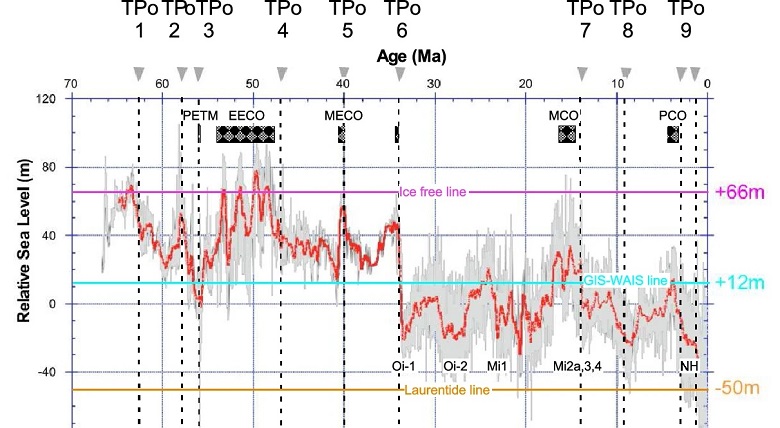
The most striking tipping point in the cenozoic occurred 34 million years ago, when Antarctica drifted away from the other continents, atmospheric CO2 declined and the climate cooled. Antarctica acquired glaciers and sea ice. They reflected sunlight away and further cooled the ocean. Sea level abruptly dropped about 70 meters and began to oscillate in a lower range (see graph).
The study also looks more closely at the last 3 million years, with worrying thoughts: Human activity is now rapidly pushing the Earth system towards the limits of its safe operating space.... This concern is supported by actual observations impacting numerous tipping elements through very drastic tipping cascades. This paves the way for a possible upcoming major transition, which might lead us to climate conditions that are fundamentally different from what has been observed in the recent or more distant past....
 "A punctuated equilibrium analysis of the climate evolution of cenozoic exhibits a hierarchy of abrupt transitions" [link], DD. by Rousseau, W. Bagniewski and V. A. Lucarini, Scientific Reports, 12 Jul 2023. "A punctuated equilibrium analysis of the climate evolution of cenozoic exhibits a hierarchy of abrupt transitions" [link], DD. by Rousseau, W. Bagniewski and V. A. Lucarini, Scientific Reports, 12 Jul 2023.
 "Huge tipping events dominated the evolution of the climate system," University of Copenhagen via Newswise, 09 Aug 2023. "Huge tipping events dominated the evolution of the climate system," University of Copenhagen via Newswise, 09 Aug 2023.
 Gaia has more about how life and the planet affect each other. Gaia has more about how life and the planet affect each other.
Mars may have had an Earth-like climate regime for 200 million years.
 "Sustained wet–dry cycling on early Mars" by W. Rapin, G. Dromart, B.C. Clarket al., Nature, 09 Aug 2023. "Sustained wet–dry cycling on early Mars" by W. Rapin, G. Dromart, B.C. Clarket al., Nature, 09 Aug 2023.
 "...possible seasonal climate patterns on early Mars" [link], Los Alamos National Laboratory, 09 Aug 2023. "...possible seasonal climate patterns on early Mars" [link], Los Alamos National Laboratory, 09 Aug 2023.
 Thanks, Rob Cooper and Newswise. Thanks, Rob Cooper and Newswise.
 Life on Mars! has more. Life on Mars! has more.
...low mass free-floating planets are very common in the Milky Way....
 "Our Galaxy Is Home to Trillions of Worlds Gone Rogue" by Katrina Miller, The New York Times, 06 Aug 2023. "Our Galaxy Is Home to Trillions of Worlds Gone Rogue" by Katrina Miller, The New York Times, 06 Aug 2023.
| 04 Aug 2023 |
What'sNEW about HGT


|
...we predict that Mavericks, and analogous transposable elements with viral properties, could mediate HGT in other animal eukaryotic lineages, including vertebrates.
 "Virus-like transposons cross the species barrier and drive the evolution of genetic incompatibilities" by Sonya A. Widen, Israel Campo Bes et al., Science, 30 Jun 2023. "Virus-like transposons cross the species barrier and drive the evolution of genetic incompatibilities" by Sonya A. Widen, Israel Campo Bes et al., Science, 30 Jun 2023.
We hypothesize that Mavericks... integrate into the genome of their host and passively replicate until an environmental factor triggers the formation of infective particles.
 "Selfish, Virus-Like DNA Can Carry Genes Between Species" by Saugat Bolakhe, Quanta Magazine, 03 Aug 2023. "Selfish, Virus-Like DNA Can Carry Genes Between Species" by Saugat Bolakhe, Quanta Magazine, 03 Aug 2023.
 Viruses... points to many related examples. Viruses... points to many related examples.
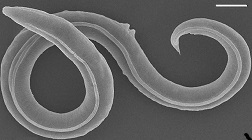 “It is, in principle, possible to stop life for more or less an indefinite time and then restart it. — Teymuras Kurzchalia, coauthor, PLoS 2023
“It is, in principle, possible to stop life for more or less an indefinite time and then restart it. — Teymuras Kurzchalia, coauthor, PLoS 2023
 "Scientists woke up a 46,000-year-old roundworms from Siberian permafrost" by Carolyn Y. Johnson, The Washington Post, with video, 27 Jul 2023; re: "Scientists woke up a 46,000-year-old roundworms from Siberian permafrost" by Carolyn Y. Johnson, The Washington Post, with video, 27 Jul 2023; re:
 "A novel nematode species from the Siberian permafrost shares adaptive mechanisms for cryptobiotic survival with C. elegans dauer larva" by Anastasia Shatilovich, Vamshidhar R. Gade et al., PLoS Genet., 27 Jul 2023. "A novel nematode species from the Siberian permafrost shares adaptive mechanisms for cryptobiotic survival with C. elegans dauer larva" by Anastasia Shatilovich, Vamshidhar R. Gade et al., PLoS Genet., 27 Jul 2023.
 Thanks, Walter Klyce and Bob Sweeney. Thanks, Walter Klyce and Bob Sweeney.
We show that ancient groundwaters sustain productive communities and highlight an overlooked oxygen source in present and past subsurface ecosystems of Earth.
This summation comes from a team who analysed the chemistry of water sampled from aquifers under Canadian fossil fuel deposits. Abundant microbial life underground is well known, but the production of free oxygen without photosynthesis is a surprise. It shows that oxygen could be available to support eukaryotic life in the meltwater of large comets or in the oceans of ice-covered moons like Europa and Enceladus.
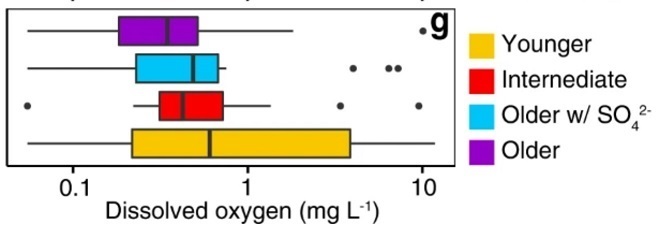
 "Hydrogen and dark oxygen drive microbial productivity in diverse groundwater ecosystems" by S.E. Ruff, P. Humez, I.H. de Angelis et al., Nature Communcations, 13 Jun 2023. "Hydrogen and dark oxygen drive microbial productivity in diverse groundwater ecosystems" by S.E. Ruff, P. Humez, I.H. de Angelis et al., Nature Communcations, 13 Jun 2023.
 "Underground Cells Make 'Dark Oxygen' Without Light" by Saugat Bolakhe, Quanta Magazine, 17 Jul 2023. "Underground Cells Make 'Dark Oxygen' Without Light" by Saugat Bolakhe, Quanta Magazine, 17 Jul 2023.
 Bacteria: The Space Colonists introduces their surprising capabilities. Bacteria: The Space Colonists introduces their surprising capabilities.
 Life on Europa, Other Moons, Other Planets? and Earth-analogs for those environments has relevant links. Life on Europa, Other Moons, Other Planets? and Earth-analogs for those environments has relevant links.
Large dust reservoirs have been detected in galaxies ...when the age of the universe was only about 600 Myr.
 "Carbonaceous dust grains seen in the first billion years of cosmic time" by Joris Witstok, Irene Shivaei, Renske Smit et al., Nature, 19 Jul 2023. "Carbonaceous dust grains seen in the first billion years of cosmic time" by Joris Witstok, Irene Shivaei, Renske Smit et al., Nature, 19 Jul 2023.
 "James Webb Space Telescope makes 1st detection of diamond-like carbon dust in the universe's earliest stars" by Robert Lea, Space.com, 19 Jul 2023. "James Webb Space Telescope makes 1st detection of diamond-like carbon dust in the universe's earliest stars" by Robert Lea, Space.com, 19 Jul 2023.
 Thanks, Jim Powers, who has convinced me to wonder: How did the first stars form without dust? Thanks, Jim Powers, who has convinced me to wonder: How did the first stars form without dust?
 The End... discusses reasons to question the usual big-bang story. The End... discusses reasons to question the usual big-bang story.
| 18 Jul 2023 | What'sNEW about HGT


|
Genes for venom may come by HGT from bacteria or fungi.
 "Horizontal gene transfer underlies the painful stings of asp caterpillars..." by Andrew A. Walker et al., PNAS, 10 Jul 2023. "Horizontal gene transfer underlies the painful stings of asp caterpillars..." by Andrew A. Walker et al., PNAS, 10 Jul 2023.
 "Centipede Venom Is A Cocktail Of Genetic Material Nicked From Bacteria And Fungi" by Rachael Funnell, commentary from IFL Science, 05 Feb 2021; re: "Centipede Venom Is A Cocktail Of Genetic Material Nicked From Bacteria And Fungi" by Rachael Funnell, commentary from IFL Science, 05 Feb 2021; re:
 "Phylogenetic analyses suggest centipede venom arsenals were repeatedly stocked by horizontal gene transfer", by Eivind A. B. Undheim and Ronald A. Jenner, open-access link, Nature Communications, 10 Mar 2021. "Phylogenetic analyses suggest centipede venom arsenals were repeatedly stocked by horizontal gene transfer", by Eivind A. B. Undheim and Ronald A. Jenner, open-access link, Nature Communications, 10 Mar 2021.
Nearly 40 percent of our modern genetic material comes from ancient retroviruses....
 "A new human embryonic cell type associated with activity of young transposable elements allows definition of the inner cell mass" by Manvendra Singh et al., PLoS Biol., 20 Jun 2023. "A new human embryonic cell type associated with activity of young transposable elements allows definition of the inner cell mass" by Manvendra Singh et al., PLoS Biol., 20 Jun 2023.
 "An Ancient Battle Is Playing Out in the DNA of Every Embryo" by Celia Ford, Wired, 17 Jul 2023. "An Ancient Battle Is Playing Out in the DNA of Every Embryo" by Celia Ford, Wired, 17 Jul 2023.
 Viruses... points to many related examples. (Identified genes occupy less than 2 percent of our genetic material.) Viruses... points to many related examples. (Identified genes occupy less than 2 percent of our genetic material.)
 "...evidence of diverse organic material on Mars" by Lauren Barnett, University of Florida, 12 Jul 2023; re: "...evidence of diverse organic material on Mars" by Lauren Barnett, University of Florida, 12 Jul 2023; re:
 "Diverse organic-mineral associations in Jezero crater, Mars" by S. Sharma, R.D. Roppel, A.E. Murphy et al., Nature, 12 Jul 2023. "Diverse organic-mineral associations in Jezero crater, Mars" by S. Sharma, R.D. Roppel, A.E. Murphy et al., Nature, 12 Jul 2023.
 "Mars Life Reveal?..." by Leonard David, Inside Outer Space, 15 Jul 2023. "Mars Life Reveal?..." by Leonard David, Inside Outer Space, 15 Jul 2023.
 Thanks, Barry DiGregorio, who comments on Leonard David's blog. Thanks, Barry DiGregorio, who comments on Leonard David's blog.
 Life on Mars! has discussion and updates about the Viking Mission. Organics are there! Life on Mars! has discussion and updates about the Viking Mission. Organics are there!
Germline mutations are the proximate source of genomic innovation and inherited diseases. This sentence introduces a broad analysis of the germline mutation rate among vertebrates. The rate can vary widely across species, and is often higher in males, especially among primates. The study is impressve and edifying, with one huge problem. Intentionally or not, it leads the reader to believe that single-nucleotide mutations explain how life evolves. Yes, this belief was once the reigning paradigm, the key to the "modern synthesis" of evolution. But it's wrong. Point mutations can lead to microevolution — minor variation and optimization of existing traits. By contrast, macroevolution requires new genetic programming that point mutations are never seen to compose. Bacteriologists already know this. These zoologists appear not to.
The new analysis looks at point mutations in existing genes over "Long-scale" and "Short-scale" timespans. The changes shown over the former also require genetic programs acquired by transfer, but these are not mentioned. A figure in commentary by Bush & Goriely illustrates the difference between macro- and microevolution (left & right, respectively):
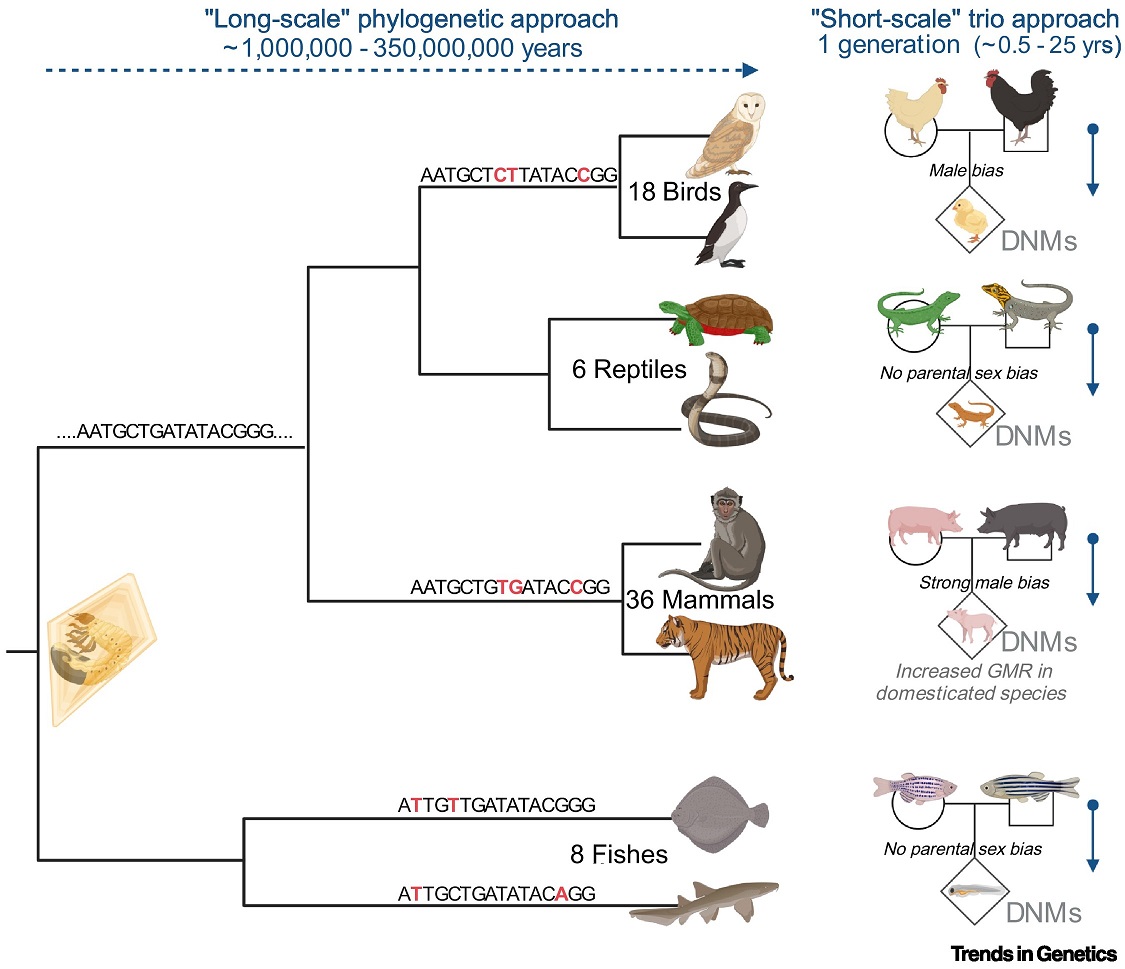
 "Evolution of the germline mutation rate across vertebrates" by Lucie A. Bergeron et al., doi:10.1038/s41586-023-05752-y, Nature, 01 Mar 2023. "Evolution of the germline mutation rate across vertebrates" by Lucie A. Bergeron et al., doi:10.1038/s41586-023-05752-y, Nature, 01 Mar 2023.
 "Fine-tuning germline mutation rates across evolution" by Stephen J. Bush and Anne Goriely, TiG, Aug 2023. "Fine-tuning germline mutation rates across evolution" by Stephen J. Bush and Anne Goriely, TiG, Aug 2023.
 Does Micro- Explain Macro-? and Does Micro- Explain Macro-? and
 Macroevolutionary Progress Redefined... have related discussion. Macroevolutionary Progress Redefined... have related discussion.
...the findings have been dazzling astronomers, revealing that stars and galaxies were forming and evolving much earlier than anyone had suspected.
 "These six distant galaxies captured by JWST are wowing astronomers," by Alexandra Witze, Nature, 30 Jun 2023. "These six distant galaxies captured by JWST are wowing astronomers," by Alexandra Witze, Nature, 30 Jun 2023.
 The End... discusses reasons to question the usual big-bang story. The End... discusses reasons to question the usual big-bang story.
![]()
|
 Like a Greek god, John von Neuman had superhuman powers – and weaknesses – as we learn in The MANIAC by Benjamin Labatut. "Johnny" was the Hungarian genius who pionered programmable computers, helped to design the atomic bomb, invented game theory and more. His story is told in the fictionalized reminiscences of colleagues, family, and others who knew him. They, too, have weaknesses which are apparent in the human voices Labatut gives them. Everyone is seen vividly, without makeup. The basic facts are accurate, but the essays are imagined. It rings true, like the best historical fiction.
Like a Greek god, John von Neuman had superhuman powers – and weaknesses – as we learn in The MANIAC by Benjamin Labatut. "Johnny" was the Hungarian genius who pionered programmable computers, helped to design the atomic bomb, invented game theory and more. His story is told in the fictionalized reminiscences of colleagues, family, and others who knew him. They, too, have weaknesses which are apparent in the human voices Labatut gives them. Everyone is seen vividly, without makeup. The basic facts are accurate, but the essays are imagined. It rings true, like the best historical fiction.

 The New Biology promises to enlighten us about the relative merits of two opposing approaches to evolution, namely mechanism and organicism. Or reductionism and holism. Or materialism and systems biology, or determinism and indeterminism. Whatever. You soon pick up that the authors lean toward the latter side, but with reservations.
The New Biology promises to enlighten us about the relative merits of two opposing approaches to evolution, namely mechanism and organicism. Or reductionism and holism. Or materialism and systems biology, or determinism and indeterminism. Whatever. You soon pick up that the authors lean toward the latter side, but with reservations.
 Twenty-one years ago, Gerald Joyce, a leading expert on origin-of-life theories, discussed the state of that research field. There were lots of problems. To deal with the chemical clutter that would muck up the prebitic world, Joyce proposed various "XNA Worlds" (right), as possible predecessors to the RNA World. None has proven fruitful. The software issue remains untouched. Today, two decades after Joyce's review, the origin-of-life problem is as daunting as ever. Is it time for a radical alternative?
Twenty-one years ago, Gerald Joyce, a leading expert on origin-of-life theories, discussed the state of that research field. There were lots of problems. To deal with the chemical clutter that would muck up the prebitic world, Joyce proposed various "XNA Worlds" (right), as possible predecessors to the RNA World. None has proven fruitful. The software issue remains untouched. Today, two decades after Joyce's review, the origin-of-life problem is as daunting as ever. Is it time for a radical alternative?
 “It is, in principle, possible to stop life for more or less an indefinite time and then restart it. — Teymuras Kurzchalia, coauthor, PLoS 2023
“It is, in principle, possible to stop life for more or less an indefinite time and then restart it. — Teymuras Kurzchalia, coauthor, PLoS 2023


